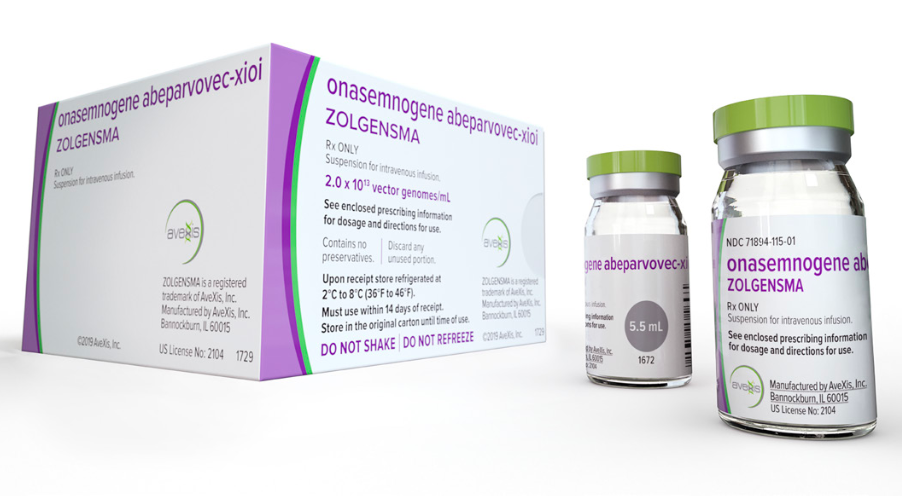- Sustainability
- DE&I
- Pandemic
- Finance
- Legal
- Technology
- Regulatory
- Global
- Pricing
- Strategy
- R&D/Clinical Trials
- Opinion
- Executive Roundtable
- Sales & Marketing
- Executive Profiles
- Leadership
- Market Access
- Patient Engagement
- Supply Chain
- Industry Trends
One Time for Lifetime: Zolgensma
The world’s most expensive drug put in context.

It isn’t easy holding the title of world’s most expensive drug, especially in an industry that’s often berated for its pricing practices. Zolgensma (onasemnogene abeparvovec-xioi), the $2.1 million gene therapy developed by Novartis Gene Therapies (previously AveXis), a Novartis company, to treat spinal muscular atrophy (SMA), knows this well. But the drug came onto the market in May 2019 offering great hope to people with this rare, genetic disease, which put a spotlight on its value.

Approved for the treatment of patients less than 2 years old with SMA, the adeno-associated virus (AAV) vector-based gene therapy has changed the lives of people born with this neuromuscular disease caused by the absence of a functional SMN1 gene. Without this gene, patients suffer rapid and irreversible loss of motor neurons, which affect muscle functions including breathing, swallowing, and basic movement. If left untreated in the most severe forms, it can lead to death or the need for permanent ventilation by the age of 2.
Zolgensma addresses the root cause of SMA by replacing the faulty or missing SMN1 gene with a functional copy via a one-time intravenous infusion. The new working copy of the gene enters a patient’s cells and stops the disease from progressing. In clinical trials, Zolgensma demonstrated prolonged event-free survival and achievement of motor milestones previously unseen. In comparison, all other existing SMA therapies are chronic treatments that require lifelong therapy.
Emphasizing value
When faced with pricing such an expensive drug, Novartis Gene Therapies had to carefully choose a payment model. That started with redefining the value of one-time gene therapies and how the healthcare system manages diagnosis, treatment, care, and associated costs for patients with rare diseases.
Lisa Deschamps

“Chronic treatments for certain diseases can cost the healthcare system tens of millions of dollars over a patient’s lifetime, and Novartis Gene Therapies challenged this paradigm with the introduction of a one-time administered gene therapy,” says Lisa Deschamps, senior vice president and chief business officer of Novartis Gene Therapies. “It has the potential to reduce the financial burden on patients, families, and the overall healthcare system by replacing chronic dosing for life with a single treatment.”
Zolgensma is consistently priced worldwide under a value-based framework; however, final pricing and reimbursement decisions are determined at a local level. Zolgensma is priced in the US at approximately 50% less than the 10-year cost of the current standard in chronic SMA therapy. At the time of FDA approval, the Institute for Clinical and Economic Review (ICER) stated that the price “fairly aligns with the benefits for these children and their families” and that it “falls within the upper bound of ICER’s value-based price benchmark range.”
Access-focused launch
With Zolgensma’s hefty price tag, Novartis Gene Therapies knew access could be an issue right from the beginning. The company addressed this early on to ensure patients could receive the treatment they needed as soon as possible.

“In SMA, we say ‘time is neurons,’ because it is critical to begin treatment as early as possible to halt irreversible motor neuron loss and disease progression,” says Deschamps. “We recognized this urgent need for treatment demanded progressive solutions to enable rapid access to Zolgensma immediately upon approval. Our goal has always been to remove potential obstacles to accessing the therapy so that patients and families can benefit as early as possible.”
To do this, Novartis Gene Therapies worked diligently to ensure key stakeholders understood SMA, the role of gene therapy, and the need to treat patients early. That work has led to strong access in the US since launch. The company offers payers outcomes-based agreements up to five years, based on clinical trials. If a patient has a negative outcome during the five-year period, Novartis Gene Therapies reimburses a percentage of the cost of the product relative to the time passed.
The company has partnered with Accredo to offer a pay-over-time option of up to five years to ease possible short-term budget constraints, especially for states, small payers, and self-insured employers. The organization also has seen accelerated access for patients in Japan and Europe since Zolgensma’s approval in those markets.
“Our access agreements are aligned to our broader strategy following local clinical and economic assessment processes, including deferred payments and installment options, outcomes-based rebates, and robust training for treating institutions, and access to RESTORE, a global registry of patients diagnosed with SMA,” says Deschamps.
Covering the cost
Understanding and accepting a relatively new pricing model was a challenge for payers at first. However, after a push to educate them, more than 99% of on-label patients now have coverage approval. In the US, policies cover about 97% of commercial lives and Medicaid access continues to progress with about 86% of lives covered.

“While some policies were more restrictive in the beginning, we continue to work with payers by educating them about Zolgensma and our clinical data, as well as the impact of SMA for patients and their families,” says Deschamps. “Overall, we’ve been pleased with the response from US payers, and the majority of the insurance policies developed to date are reflective of the label for Zolgensma and the time sensitive nature of the disease.”
For those who need assistance, Novartis Gene Therapies offers OneGene, a comprehensive, individualized support program for families with patients less than 2 years old and their healthcare providers. As part of this program, a personalized support team focuses on the needs of individual families; provides verification of insurance benefits; and customizes resources, support, and assistance.
Data debacle
In August 2019, evidence of preclinical Zolgensma data manipulation came to light, which prompted an FDA investigation. The agency concluded that “objectionable conditions were found and documented,” according to a statement provided to Reuters, but no penalties were assigned to Novartis Gene Therapies. Though the company notified FDA of the violation one month after Zolgensma’s approval, it could have been more forthcoming. That experience has refreshed the company’s commitment to data integrity and transparency in working with regulators.
Zolgensma prevents further motor neuron and muscle degeneration by replacing the defective or missing gene that causes SMA. (catalin - stock.adobe.com)

“[We are] implementing a management strategy and quality improvement plan to strengthen the quality culture and to enhance the accuracy, reliability, and completeness of quality records and data generated across the company,” says Deschamps. “We have also made a voluntary commitment to notify the FDA within five business days of receipt by our quality organization of any credible allegation related to data integrity impacting any pending application in the Novartis Group.”
The future of SMA
The current market of SMA treatments includes Biogen’s gene therapy product Spinraza (nusinersen), approved in December 2016; Zolgensma; and Genentech/Roche/PTC Therapeutic’s Evrysdi (risdiplam), approved in August. Evrysdi, the first oral therapy to treat SMA, has an advantage when it comes to administration, as Spinraza is injected into spinal fluid and Zolgensma requires IV injection. But when it comes to the big picture, the one-time treatment of Zolgensma is difficult to beat.
In July, Biogen announced a Phase IV trial to examine the additional benefit of Spinraza in patients who have already undergone treatment with Zolgensma. If approved, this could further improve the quality of life for SMA patients moving forward.
Elaine Quilici is Pharm Exec’s Senior Editor. She can be reached at equilici@mjhlifesciences.com.

Transforming Cancer Care: Data, AI, and Patient-Centered Care
July 20th 2023Join us as Mohit Manrao, SVP and head of US oncology at AstraZeneca, shares his patient-centered approach to transforming cancer care, bridging the gap between innovative science and tangible patient outcomes across all populations on a global scale.
